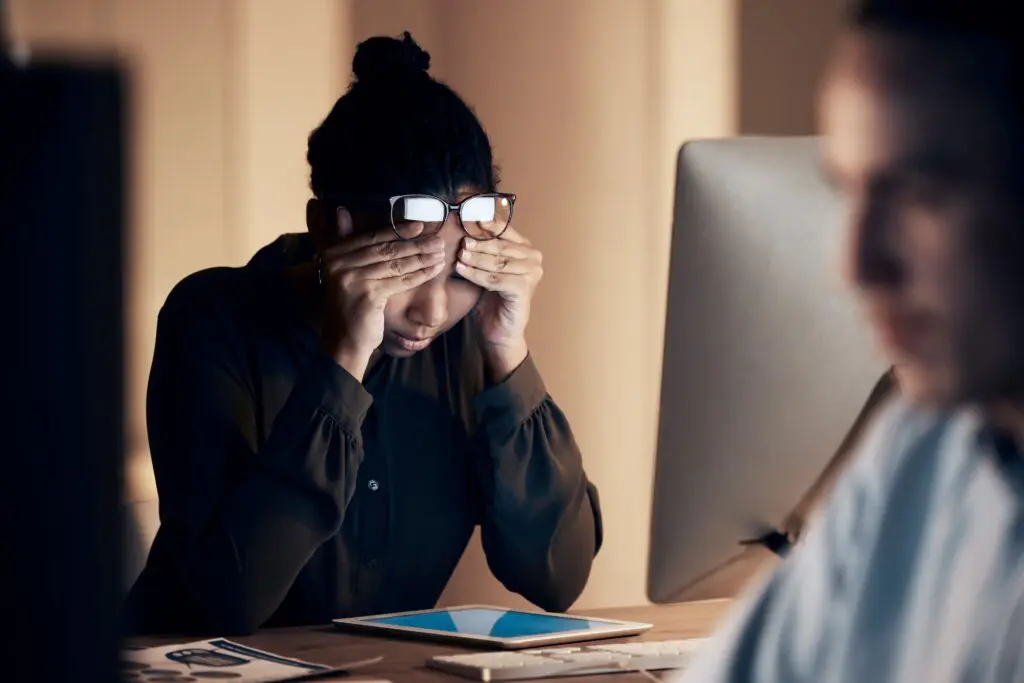Before jumping into the content of this month’s blog, I’d like to ask that you perform a small task:
E
I’ll have you begin by staring directly and calmly at the letter E above. Now, while looking at the E, slowly rotate your head right, then left, and continue in this rhythmic sequence for 10 seconds. Did the E move; did it double? Chances are it stayed pretty stationary throughout the test. Ta-da! Isn’t that amazing?! Underwhelmed? Let me explain.
Any time that we move our heads, our vestibular (inner ear) system is sending information to our eyes about where to move. This reflexive system, known as our vestibulo-ocular reflex (VOR), is what keeps the world stable when our body is not and is integral for maintaining our sense of balance and spatial awareness. As Optometrists, we are often thought to deal primarily with the eyes – but in cases of developmental abnormality or acquired brain injury, an indirect assessment of the ears is critical. In the reflex described above, most people will demonstrate a 1:1 ratio between the movement of their head and eyes. When a deficiency with this reflex is present it causes conflicting information to be relayed from our inner ear and our eyes and this symmetry may no longer be present. As a result, people are left dealing with persistent visual symptoms and issues with balance and discomfort. Here in Kelowna we are fortunate to work alongside many wonderful colleagues who assist with the medical management and vestibular rehabilitation that is commonly indicated for those dealing with issues in this area. These allied professionals include physiotherapists, general practitioners, occupational therapists, chiropractors and audiologists, among others. As Optometrists however, we are uniquely positioned to provide additional assistance to help patients move forward when these issues are uncovered. Between glasses considerations, Vision Therapy and what is known as syntonic phototherapy we possess many unique tools that can make an extremely positive impact when the eyes and ears are not acting in sync.
When we look at the visual cues feeding into our vestibulo-ocular reflex, we find that effectively making use of our peripheral visual field is of utmost importance. We preferentially process motion in the peripheral region of our retina, so how the information is presented becomes incredibly important. I use the phrase “how the information is presented” because the way in which we as Optometrists prescribe glasses can make a marked impact on how someone recovers from brain injury or deals with certain developmental disorders. While we often think of glasses as simply making things clearer, they also change the magnification and can potentially add distortion to our visual field. In particular, when our eyes move away from the central point of clarity in our glasses, there is either a “pincushion” type distortion or a “barrel-like” distortion created depending on your type of prescription. The addition of cylinder (or astigmatism) to glasses also creates another layer of peripheral distortion, and the use of bifocal or no-line bifocal (progressive addition lenses) adds another layer still. While people are typically able to adapt extremely well to the spatial distortion that glasses can create, this is not always the case with developmental disorders or following injury. In cases of vestibular deficit in particular, there are therapeutic ways in which glasses can be prescribed to ease recovery. This may involve providing separate pairs of glasses for different tasks or possibly a transition to contact lenses, which don’t create the same spatial distortion that glasses do. The addition of therapeutic tints, coatings and what is known as prism to glasses can also be helpful for recovery or symptom management. In addition to glasses considerations, Vision Therapy may also be a part of treatment for those displaying vestibular deficits. This is especially true if an underlying issue with focusing, ocular alignment, visual acuity or visual processing is found concurrently.
In our clinic, we work with a large number of individuals whose visual and vestibular systems are not functioning optimally. As you can probably sense in the paragraphs above, guiding them towards recovery involves consideration of many important and individualized factors. At the end of the day, collaboration and an awareness of allied services is key. This particular blog has been tailored to Optometric considerations, but it’s important to remember that recovery typically takes input and assistance from a wide variety of professionals. As Optometrists, we are fortunate to have tools, knowledge and a unique skill set for addressing pervasive functional issues that may arise between the eyes and ears – but ensuring that we understand how the work of others can complement what we do is paramount. The systems in our body are far too complex and interconnected for any one group to have all the answers. As such, I feel extremely thankful to be working in a rehabilitative community here in the Okanagan where this reality is both understood and respected.
Until next month,
Paul Rollett, OD




